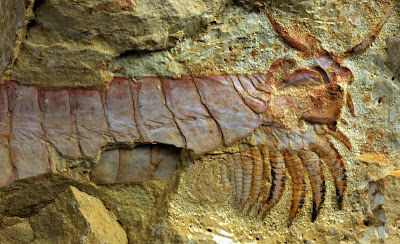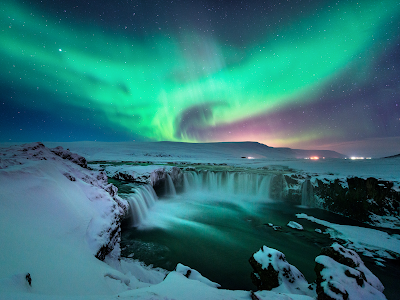Carcharocles chubutensis, which roughly translates to the "glorious shark of Chubut," from the ancient Greek is an extinct species of prehistoric mega-toothed sharks in the genus Carcharocles.
These big beasties lived during Oligocene to Miocene. This fellow is considered to be a close relative of the famous prehistoric mega-toothed shark,
C. megalodon, although the classification of this species is still disputed.
Swiss naturalist Louis Agassiz first identified this shark as a species of Carcharodon in 1843. In 1906, Ameghino renamed this shark as
C. chubutensis. In 1964, shark researcher, L. S. Glikman recognized the transition of Otodus obliquus to C. auriculatus. In 1987, shark researcher, H. Cappetta reorganized the
C. auriculatus -
C. megalodon lineage and placed all related mega-toothed sharks along with this species in the genus Carcharocles.
At long last, the complete
Otodus obliquus to
C. megalodon progression began to look clear. Since then,
C. chubutensis has been re-named into
Otodus chubutensis, also the other chronospecies of the
Otodus obliquus -
O. megalodon lineage. Chubutensis appears at the frontier Upper Oligocene to Lowest Miocene (evolving from
O. angustidens which has stronger side cusps) and turns into
O. megalodon in the Lower to Middle Miocene, where the side cusps are already absent. Despite previous publications, there is no
chubutensis in the Pliocene.
Victor Perez and his team published on the transition between
Carcharocles chubutensis and
Carcharocles megalodon (Otodontidae, Chondrichthyes): lateral cusplet loss through time in March of 2018. In their work, they look at the separation between all the teeth of Carcharocles chubutensis and Carcharocles megalodon and published that it is next to impossible to divide them up as a complex mosaic evolutionary continuum characterizes this transformation, particularly in the loss of lateral cusplets.
The cuspleted and uncuspleted teeth of Carcharocles spp. are designated as chronomorphs because there is wide overlap between them both morphologically and chronologically. In the lower Miocene Beds (Shattuck Zones) 2–9 of the Calvert Formation (representing approximately 3.2 million years, 20.2–17 Ma, Burdigalian) both cuspleted and uncuspleted teeth are present, but cuspleted teeth predominate, constituting approximately 87% of the
Carcharocles spp. teeth represented in their samples.
In the middle Miocene Beds 10–16A of the Calvert Formation (representing approximately 2.4 million years, 16.4–14 Ma, Langhian), there is a steady increase in the proportion of uncuspleted Carcharocles teeth.
In the upper Miocene Beds 21–24 of the St. Marys Formation (representing approximately 2.8 million years, 10.4–7.6 Ma, Tortonian), lateral cusplets are nearly absent in Carcharocles teeth from our study area, with only a single specimen bearing lateral cusplets. The dental transition between
Carcharocles chubutensis and
Carcharocles megalodon occurs within the Miocene Chesapeake Group. Although their study helps to elucidate the timing of lateral cusplet loss in Carcharocles locally, the rationale for this prolonged evolutionary transition remains unclear.
The specimen you see here is in the Geological Museum in Lisbon. The photo credit goes to the deeply awesome Luis Lima who shared some wonderful photos of his recent visit to their collections.
If you'd like to read the paper from Perez, you can find it here:
https://www.tandfonline.com/doi/full/10.1080/02724634.2018.1546732































